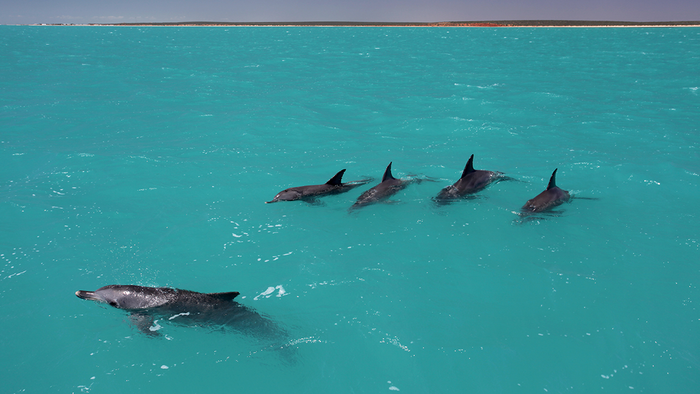Sleek frames glisten in the surf,
iridescent blues and greys
skimming waves with
jutting beaks
and toothy grins.
Dorsal fins line up in pairs
to start the dance,
weaving overlapping couplets
into living mosaics
transcending kith
and kin.
Invisible nets
cast between bonds
to tie all together –
networks of support
thrumming
with success.

This poem is inspired by recent research, which has found that bottlenose dolphins form the largest alliance network outside of humans.
Cooperation lies at the heart of human lives and society, from day-to-day interactions to some of our greatest endeavours. Indeed, modern human societies strongly depend on high levels of cooperation between individuals, and almost everywhere, humans live in cooperative groups of varying size and type – from families to nations. Although cooperation is a widespread phenomenon in nature, human cooperation exceeds that of all other species with respect to the scale and range of our cooperative activities. Indeed, intergroup cooperation in humans has long been thought to be unique and dependent upon two specific features that distinguish humans from our common ancestry with chimpanzees – the evolution of both pair bonds (i.e., the strong affinity that develops between a mating pair) and parental care by males.
In this new study, researchers have shown that male bottlenose dolphins form the largest known alliance network outside of humans, where the cooperative relationships between groups, rather than alliance size, increases male access to other females to reproduce. The researchers analysed association and consortship (short-term mating relationships) data to model the structure of alliances between 121 adult male Indo-Pacific bottlenose dolphins at Shark Bay in Western Australia. Unrelated male dolphins were found to form first-order alliances of two-three males to cooperatively pursue consortships with individual females. Second-order alliances of four-14 unrelated males were then found to compete with other alliances over access to female dolphins, with third-order alliances occurring between cooperating second-order alliances. During this study, each male was found to be connected, directly or indirectly, to every other male, and the duration with which males consort with females was found to be dependent upon being well connected with third-order allies, independently of the effect of their second-order alliance connections. In other words, alliances between groups increase access to females for the males, thereby increasing reproductive success. The findings of this study reveal that intergroup male alliances can in fact arise directly from a promiscuous mating system without pair bonds or male parental care. This highlights that dolphin societies, as well as those of nonhuman primates, provide valuable model systems for understanding the evolution and development of human cooperation.